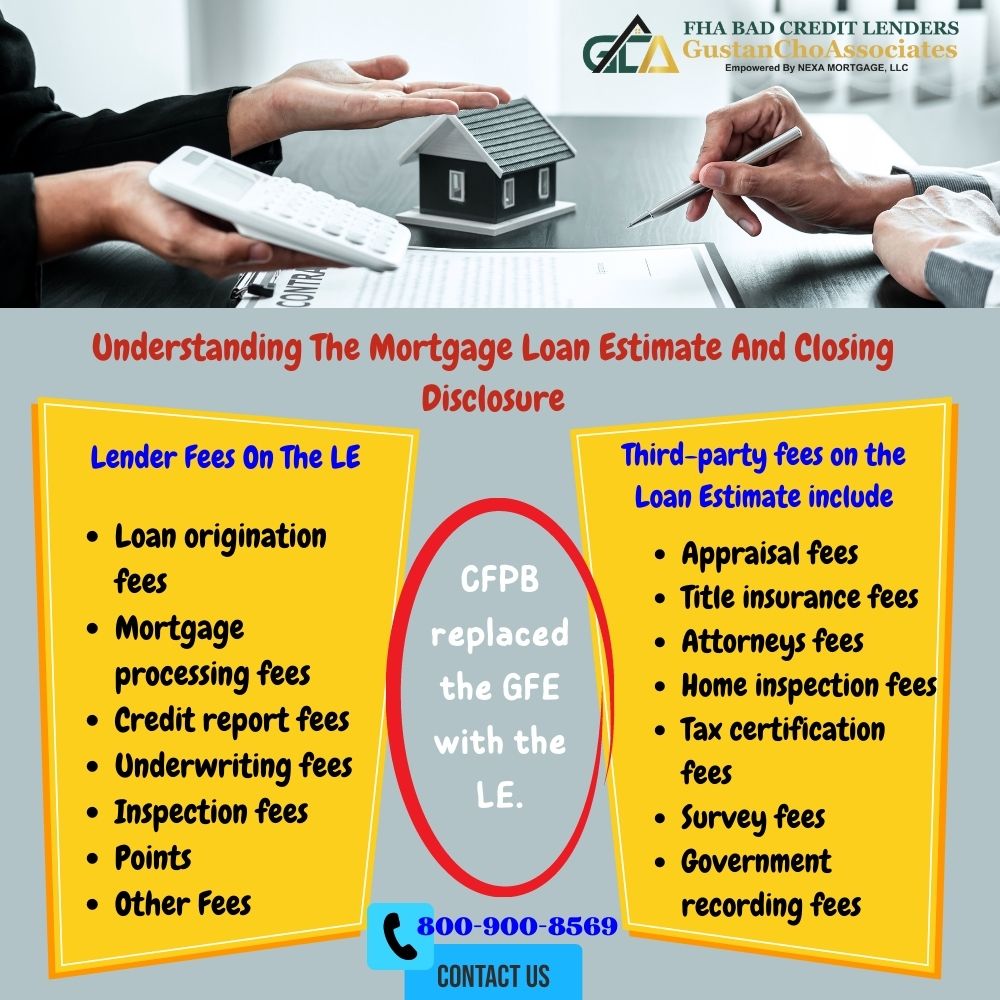Understanding The Mortgage Loan Estimate and Closing Disclosure
This blog will discuss and cover understanding mortgage loan estimate and closing disclosure. After the mortgage and real estate meltdown of 2008, the whole mortgage industry went through a major overhaul.
Mortgage lenders, including banks, credit unions, mortgage bankers, and mortgage bankers, had to abide by and conform to new mortgage regulations.
Understanding The Mortgage Loan Estimate is key for mortgage professionals and consumers. Foreclosure rates have hit historic highs. Tens of thousands of lenders went out of business. No-income verification mortgage loans went extinct after the 2008 financial crisis. After many years, non-QM and alternative lending loan programs came back. In the following paragraphs, we will cover understanding loan estimates and closing disclosures.
No-Doc Loans Are Back
No doc stated income loans and lenders specializing in these mortgage products disappeared overnight. However, no-doc and stated-income mortgages are now in full force at FHA Bad Credit Lenders.
Millions of homeowners had home loans with teaser rates and negative amortization initially. After a few years, their new adjustment on their loan payments has multiplied significantly. They could not afford their home and went into foreclosure.
FHA Bad Credit Lenders now offers no-doc loans, DSCR mortgages, asset-depletion, profit and loss statement-only mortgages, and hundreds of other non-QM mortgage loan programs.
New Mortgage Disclosures and Regulations
The government created disclosures after disclosures as part of the new mortgage rules.
The Good Faith Estimate, also known as the GFE, is part of the mandatory requirements lenders must disclose. Understanding The Good Faith Estimate was often complex and confusing. CFPB created the new Loan Estimate to make Understanding The Mortgage Loan Estimate much easier than the old GFE.
The CFPB was working on replacing it with the Loan Estimate, where the LE replaced the GFE. The goal was to make Understanding The Mortgage Loan Estimate easier for the consumer.
The Good Faith Estimate Versus Loan Estimate
The GFE is supposed to be a very important part of the mortgage application process. However, understanding the good faith estimate was often complex for many loan officers and consumers.
Understanding The Mortgage Loan Estimate is much easier, so the CFPB replaced the GFE with the LE.
The Good Faith Estimate was created to serve as a way for a public consumer, the mortgage applicant, to do the following:
- compare
- shop
- comprehend the costs and fees associated with obtaining a residential mortgage loan
Good Faith Estimate Replaced By the lE
The Good Faith Estimate must be given to all mortgage applicants by lenders under the Real Estate Settlement Procedures Act, also known as RESPA.
The Good Faith Estimate needs to be provided to all mortgage loan applicants within three days of a mortgage loan applicant applying for a residential mortgage loan.
The Good Faith Estimate needs to include costs and fees itemized for getting a mortgage loan.
Costs And Fees On Loan Estimates
There will be itemized fees and costs on the Loan Estimate. The costs and fees listed on the Loan Estate are not final costs and fees. There are estimated fees and costs that a home mortgage loan application may or may not incur.
The fees and costs on the Loan Estimate can change. If there is an adjustment on the home purchase price, such as if the appraisal on the subject property does not appraise out and there is a price adjustment on the original real estate purchase price.
Most lenders will inflate the Loan Estimate. This is because the actual costs incurred by the borrower cannot be higher than 10% over the price quoted on the Loan Estimate, or else the lender needs to pay for the difference.
Case Scenario on Disclosing on the LE
For example, if the loan originator quoted the borrower a $1,000 fee on a well and septic inspection.
- had a well and septic inspection and cost $2,000
- a maximum home buyer needs to pay is $1,100 or 10% above the Loan Estimate
The lender needs to pay the $900. Even though the mortgage has no relationship and profit or gains with the well and septic inspection. However, if the LE stated $3,000 for the well and septic inspection and the homebuyer paid $2,000, the mortgage lender is not liable buyer will pay the $2,000. Most lenders will inflate the LE. Just because buyers get a lower quote on a Loan Estimate does not mean they are getting the best deal. Two categories of fees fall within the Loan Estimate. The lenders’ fees and the third-party fees
Lender Fees On The LE
The lender fees and costs on the LE include the following:
- Loan origination fees
- Mortgage processing fees
- Credit report fees
- Underwriting fees
- Inspection fees
- Points
- Other Fees
Lender fees on the LE are fees and costs associated with the lender in originating the mortgage loan.
What Is The Closing Disclosure
The new closing disclosure is the old HUD-1 Settlement Statement. When the CFPB replaced the old Good Faith Estimate with the new Loan Estimate, they also replaced the old HUD-1 Settlement Statement with the new Closing Disclosure, referred to as the new CD.
Understanding The Mortgage Loan Estimate On Third Party Fees
Third-party fees on the LE are costs incurred by the borrower in getting the home loan to close and are independent of the mortgage lender. Third-party fees on the Loan Estimate include
- appraisal fees
- title insurance fees
- attorneys fees
- home inspection fees
- tax certification fees
- survey fees
- government recording fees
Update On This Article On Understanding Loan Estimates
The Loan Estimate replaced the Good Faith Estimate on October 3, 2015. Now, after borrowers get a CTC, CLEAR TO CLOSE, there is a three-day waiting period for a home buyer to be able to close on their home loan. The replacement of the GFE was the doing of the Consumer Financial Protection Bureau, CFPB.











